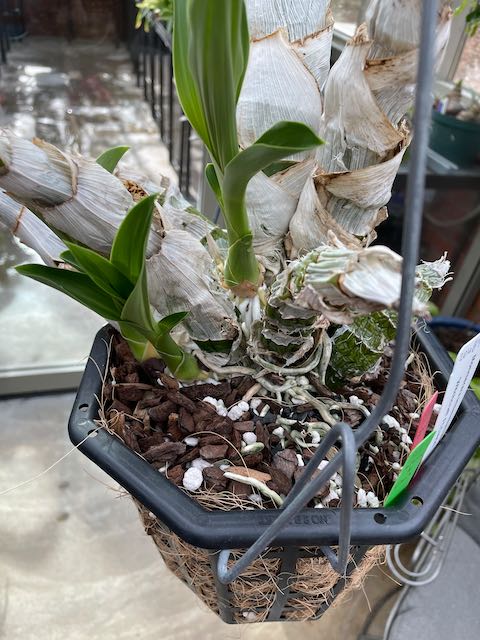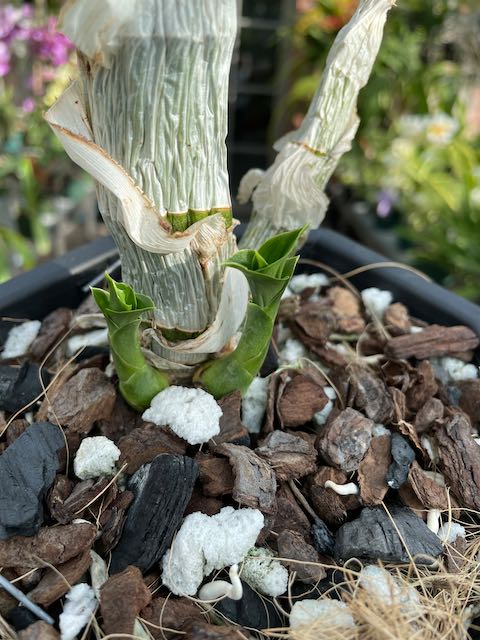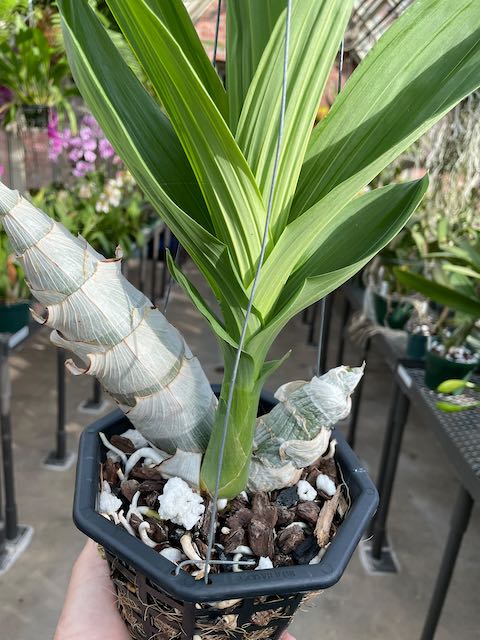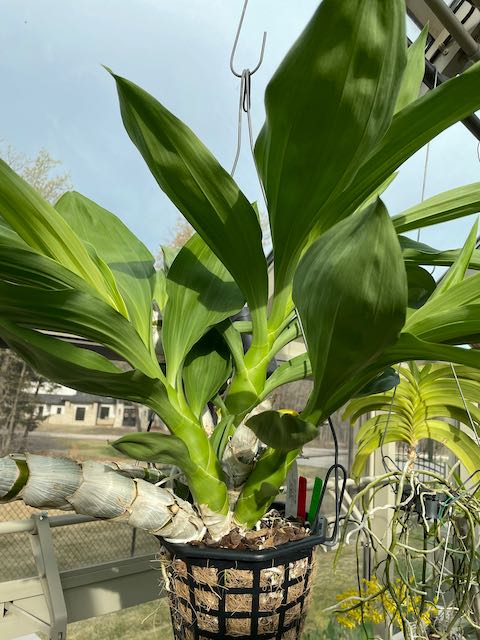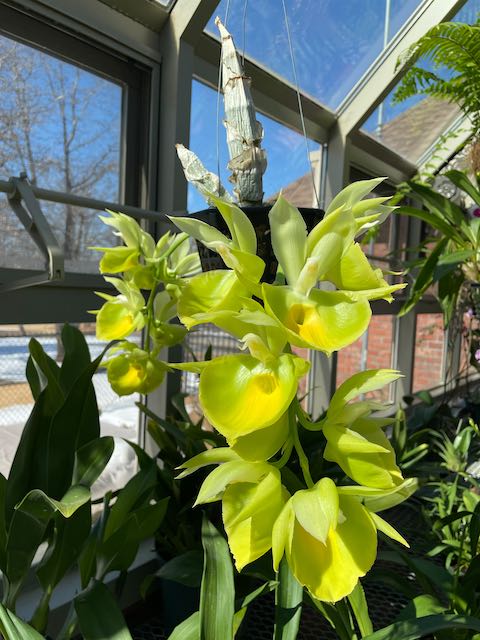The following article is reposted with permission from Fred Clarke of Sunset Valley Orchids. Interpretive photos by Douglas Needham.
It’s officially spring, and your Catasetinae should be getting started on their growing season. Some of you along the southern edge of the country have already started watering and fertilizing. I am hearing reports from southern growers that many plants now have new growths that are 6–12” tall with new roots approximately 3–6” long. This is the time to start watering and fertilizing! Growers farther north (myself included) may still have a few weeks until the new roots are 3–6” long. Remember that not all Catasetinae come out of dormancy at the same time, so you may have some plants showing well-developed roots while others will be just starting to root. Begin watering and fertilizing plants that are ready and hold off on the ones still needing more time; this is a good practice to develop.
During this time of year, Catasetinae like lots of light, warmth, humidity and air movement. Be sure your plants are getting the correct conditions now, as this will really help them get a good start on their seasonal growth. Ideal temperatures in early spring are 60–70°F nights and 75–85°F days. Humidity should be 50% or higher to best support the plants and new roots.
When beginning to water, start slowly and gradually increase the frequency and quantity as the plants develop their pseudobulbs. I start the watering season using ½ tsp fertilizer per gallon of water and increase to 1 tsp per gallon as the days get longer and the plants experience high temperatures in July and August before switching back to ½ tsp per gallon in September and October.
Don’t forget that Catasetinae prefer to be repotted or divided with the onset of new growth, just before or as the new roots start to show. If you have plants in 3” pots, wait until you see the start of a new growth, then unpot and add more moss around the existing medium to fit into a 4″ pot.
Early in the growing season is when spider mites can get a foothold on your plants. Be diligent and check the undersides of the new leaves regularly. If mites are detected, spray immediately. Their populations can quickly get out of control if early action is not taken!
The new 2022 Catasetinae offering is really amazing! Plants are developing nicely, and I expect to have the new list ready to distribute in late June.
Below are photos of various stages of growth on several genera of Catasetinae with notations of when to start watering and fertilizing.
